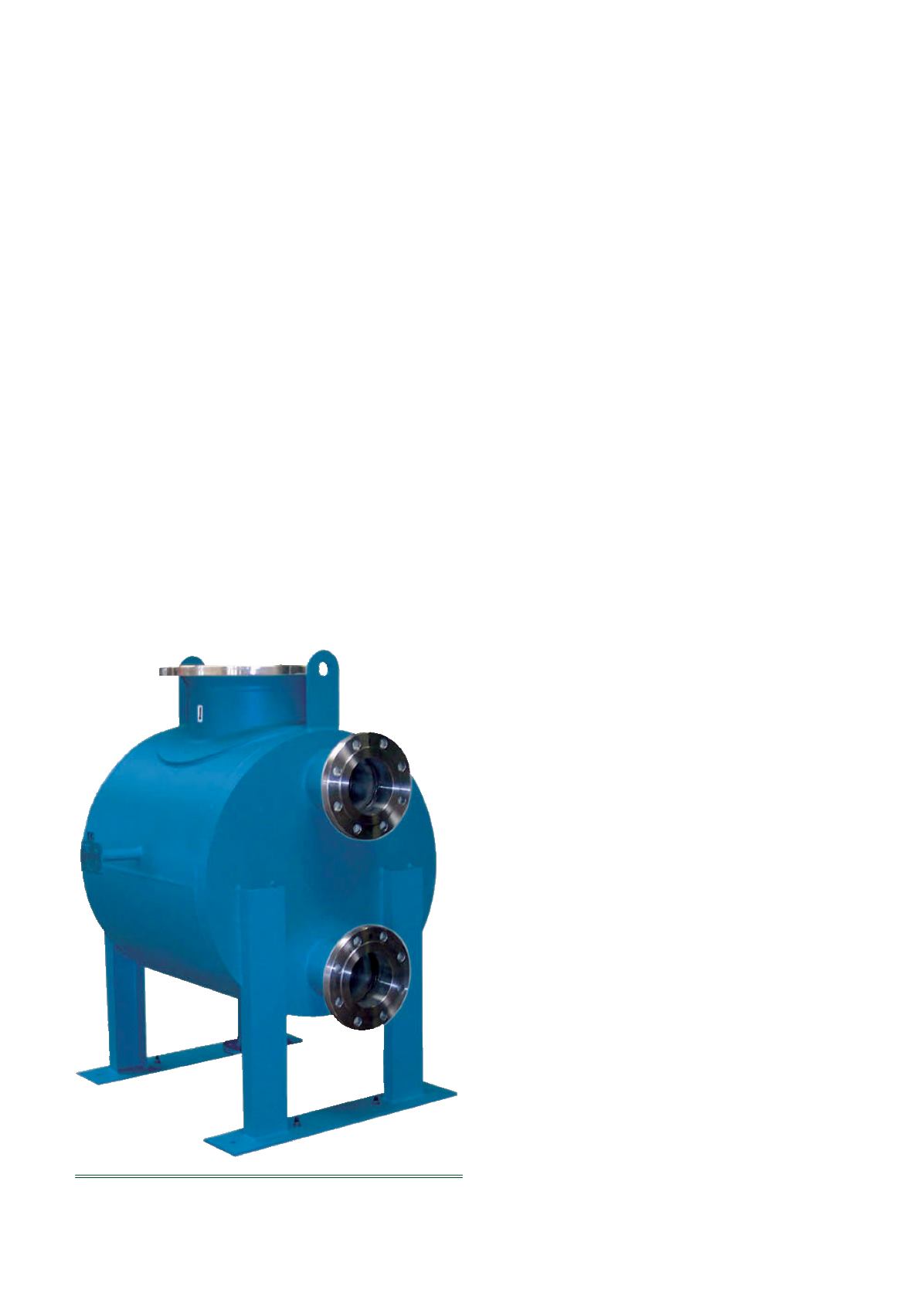
60
| WORLD FERTILIZER |
NOVEMBER 2016
performance in many parts of the plant, including:
n
n
Desulfurisation.
n
n
Water-gas shift process.
n
n
Amine process.
n
n
Methanation process.
The many benefits of plate heat exchangers, both
gasketed and welded types, have led to increased use for
process duties that were previously carried out primarily
by shell and tube heat exchangers.
Benefits of plate heat exchangers
Plate heat exchangers have been proven successful in
many different positions of the ammonia production
process, from hydrocarbon feedstock to ammonia
end-product. They offer the highest heat transfer
coefficients of any heat exchanger type and the
corrugated plate design has many advantages when
compared to traditional tubes used in shell and tube heat
exchangers. Plate heat exchangers have been considered
difficult to clean and not resistant enough for critical
process positions. In fact, the corrugated channels
between the plates give the fluids very high levels of
turbulence and the flow becomes turbulent at a Reynolds
number of approximately 150. The high turbulence causes
high shear stress between the fluid and the plate wall,
which prevents fouling from building up on the heat
transfer surfaces. This increases the time between
cleanings. Studies have shown that by designing plate
heat exchangers to maximise the channel velocity and
shear stress, fouling problems can be significantly
reduced.
1
The API 662 code recommends a shear stress
level of 50 Pa or higher for good, self-cleaning properties.
This shear stress level is easily reached in a plate heat
exchanger with a pressure drop allowance over 50 kPa.
Plate heat exchangers also distribute the flow evenly over
the plates, decreasing the risk for low-velocity zones,
which are common in shell and tube heat exchangers,
where fouling can easily start to build up.
Considering the above, the specific fluids in a heat
exchanger should be evaluated for their proneness to
cause fouling at the specific operation temperatures. It can
often be worthwhile to use a plate heat exchanger with
longer plates or a multi-pass configuration in order to
increase the channel flow velocity and ensure that the full
allowable pressure drop is used. Using longer plates to
increase the shear stress will make the heat exchanger
more expensive but will pay off if fouling is a major
concern. Increased pump/compressor capacity and
increased pressure drop allowance in fouling critical heat
exchangers is also a good way to prevent fouling problems
and to lower maintenance costs.
The fluids in the production process for ammonia are
not very critical in terms of corrosion. In processes where
hydrogen sulphide, carbon oxide or carbon dioxide could
form oxidising substances, ammonia or other corrosion
inhibitors are usually added in small quantities to
neutralise the solution. For the positions where plate heat
exchangers are used, no alloys higher than SS316 are
required and, since plate heat exchangers' plates are not
made of alloys lower than SS304 or SS316, corrosion risks
can easily be avoided.
Some heat exchanger positions are not well-suited for
plate heat exchangers due to too high temperature, for
example, in the primary and secondary reformer or due to
too high pressure, for example, in ammonia synthesis.
There are, however, many positions where plate heat
exchangers are the preferred choice. In existing plants, the
energy consumption can be optimised by pre-heating
natural gas fuel using downstream fluids, such as ammonia
condensate, or by producing steam from reformer fluegas.
2
These are positions well suited for welded plate heat
exchangers that with their small footprint and high heat
transfer rates can easily be added to existing plants in
order to save energy.
Water-gas shift process
Water-gas shift converters are an important step in
ammonia production. They increase the hydrogen output
by allowing water to react with remaining carbon
monoxide in the synthetic gas (exiting the reformer) to
form carbon dioxide and hydrogen. This reaction takes
place in the reformer as well but, to maximise the
hydrogen production, a dedicated water-gas shift unit is
used after the reformer. The shift reaction typically takes
place in two catalytic reactors, one high temperature shift
(HTS) catalyst and one low temperature shift (LST) catalyst.
The shift reaction is exothermal and the synthetic gas
must constantly be cooled so that the temperature stays
Figure 1.
Shell and plate heat exchanger for tough process
applications.


